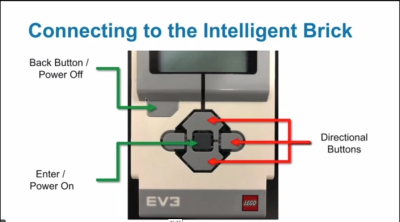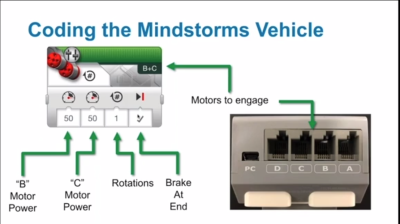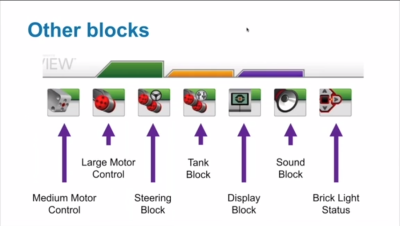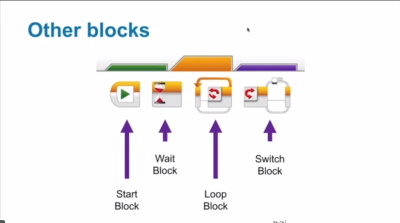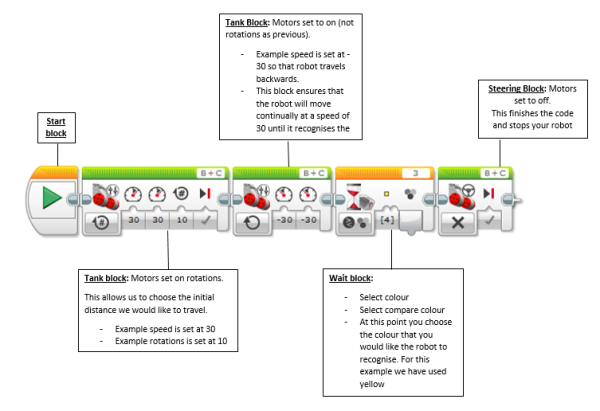This is an old revision of the document!
EV3 INTRODUCTORY WORKSHOP
The introductory workshop allows participants to engage with the EV3 and Lego Mindstorms software. Feel free to continue your learning on the Mindstorms webpage.
Outcome: Participants learn to apply science, technology, engineering, and math concepts (STEM). Participants are encouraged to follow their imagination, learn together and solve problems through creativity.
Learning Areas: STEM
Time Frame: 1hr 30 m
Battery: Ensure that the battery is fully charged each session.
Focus
- Giving members of the public and potential future participants of the Lego Robotics program the chance to experience EV3 building and coding in a workshop setting.
- Exploring the very basics of using the Lego Mindstorms kit.
- Learning how to build a basic robot.
- Learn how to code the robot to move.
- Discussing different types of sensors and what type of situation or challenge you may choose to use them in.
- How to program the colour sensor.
Material
- LEGO Mindstorms EV3 Core Set.
- EV3 Mindstorms computer program downloaded to PC-(App on Ipad can be used if you do not have access to this).
- Training mat.
- Colour sensor.
- Piece of Yellow Paper.
- An object for the robot to drive around.
Aim
- Build a basic robot.
- Code the robot to move forwards 1 metre, turn around an object, and proceed back towards the point in which it first started.
- The robot will then be coded to recognise and stop on the colour yellow.
Session Outline
- Staff member to introduce themselves and ask participants to do the same.
- Discuss the focus and aim of the session. What are we trying to accomplish? (See Aim)
- Also remember to let participants know that questions are welcome throughout the session.
- Bring out the Lego Mindstorms EV3 Core set and go through the parts, pieces and what their functions are/why we use them.
- Show examples both in paper format and video format of robots that can be built using this set.
- Now it is time for the participants to work together to build a robot that will be able to carry out the aims discussed earlier. Make sure everyone gets a turn.
- Once the basic robot is completed this is where we will now go more in depth in our talks about the colour sensor, how it works, what we want it to do, and where on the robot would be best for us to attach it so that we get the results we want.
- After the colour sensor is attached we will then move on to discuss the EV3 mindstorms computer program and its different components - (images available below in the resources section to help in the explanation of this).
- Now, with a basic understanding of the coding we will attempt to code the robot to move 1 metre forward, turn around an object and travel back in the direction it came until it reaches the yellow piece of paper and recognises the colour yellow, at which point it will stop.The code can be found in the 10 week session outline.
- Once you have successfully coded the robot sit around and discuss other things that we could code the robot to do. What about choosing a different colour? What if we had used a different sensor, like the touch sensor? Would our code have to be change and how might it look if we did change it?
Resources
The below image explains the EV3 brick or 'brain' and what functions each button have.
This image explains how we connect the motors to the EV3 brick and comes in handy when coding.
The following 2 images explore what we call the 'palette' in our EV3 Mindstorms computer programme.
CODING THE COLOUR SENSOR
Coding the colour sensor to stop when it recognises a colour:
The below example on coding the colour sensor to stop when it recognises a colour is based on the following aim;
AIM: Code the robot to move 'X distance forward' and then to move backward on the same trajectory until it recognises the programmed colour. Once it has detected this colour it will then stop.
Example of code as seen below
For more information visit: https://www.fllcasts.com/tutorials/147-ev3-basics-course-color-sensor-detect-line-part-1
